Abstract
A pooled-sample approach to the construction of high-resolution genetic maps is described. The strategy depends on the existence of an easily selectable target locus and the ability to produce large segregating populations. If these requirements are met, the pooled-sample mapping approach allows tightly linked markers (e.g., restriction fragment length polymorphisms) to be mapped relative to the target with a great economy of effort. The recombination fractions among loci can be estimated by the maximum likelihood method and a simple approximate estimator is derived. The order of loci is deduced using a Bayesian statistical framework to yield posterior probabilities for all possible orderings of a marker set. Optimal pooling strategies and the effects of misclassification of selected individuals are discussed and studied by computer simulation. The feasibility of this method is demonstrated by the high-resolution mapping of a region on chromosome 5 of tomato that contains a gene regulating fruit ripening.
Full text
PDF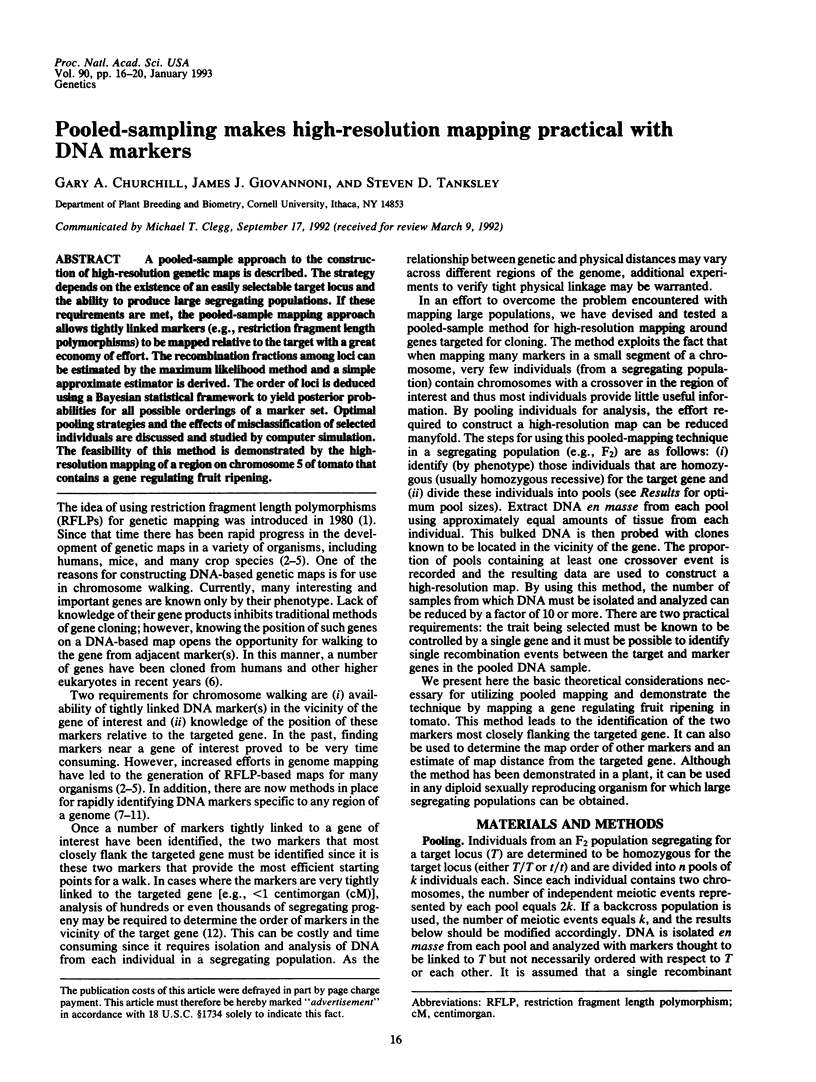
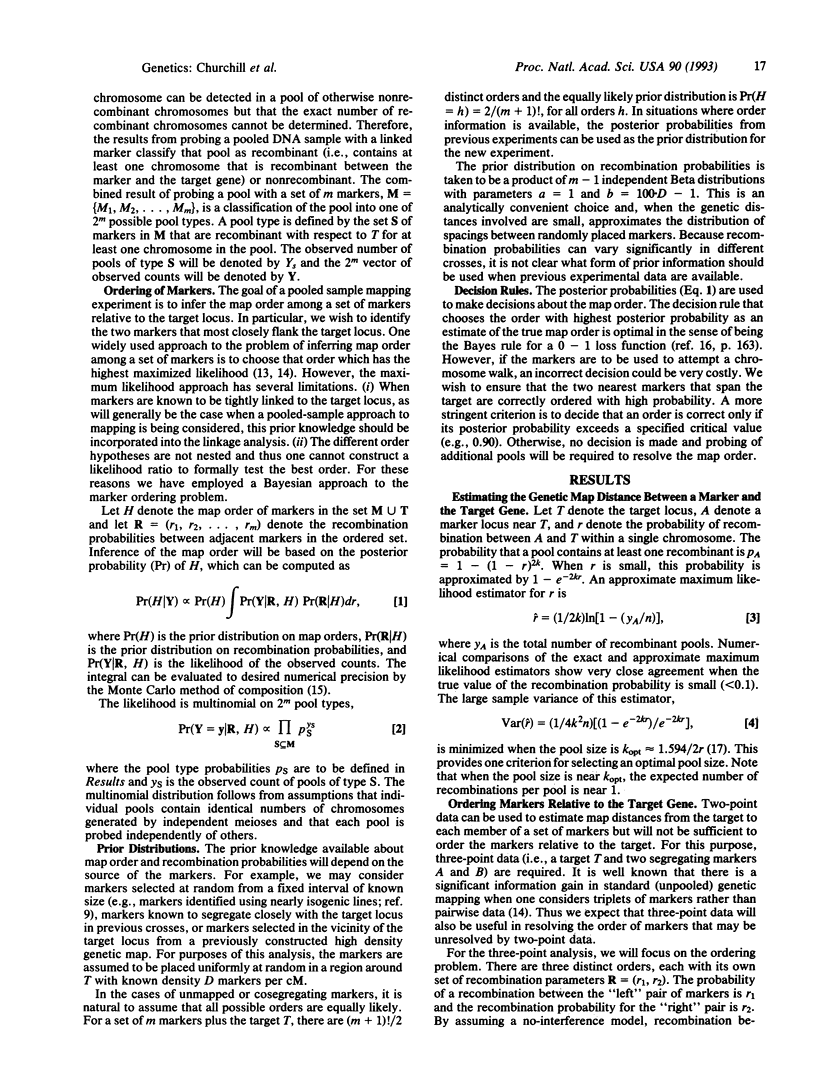
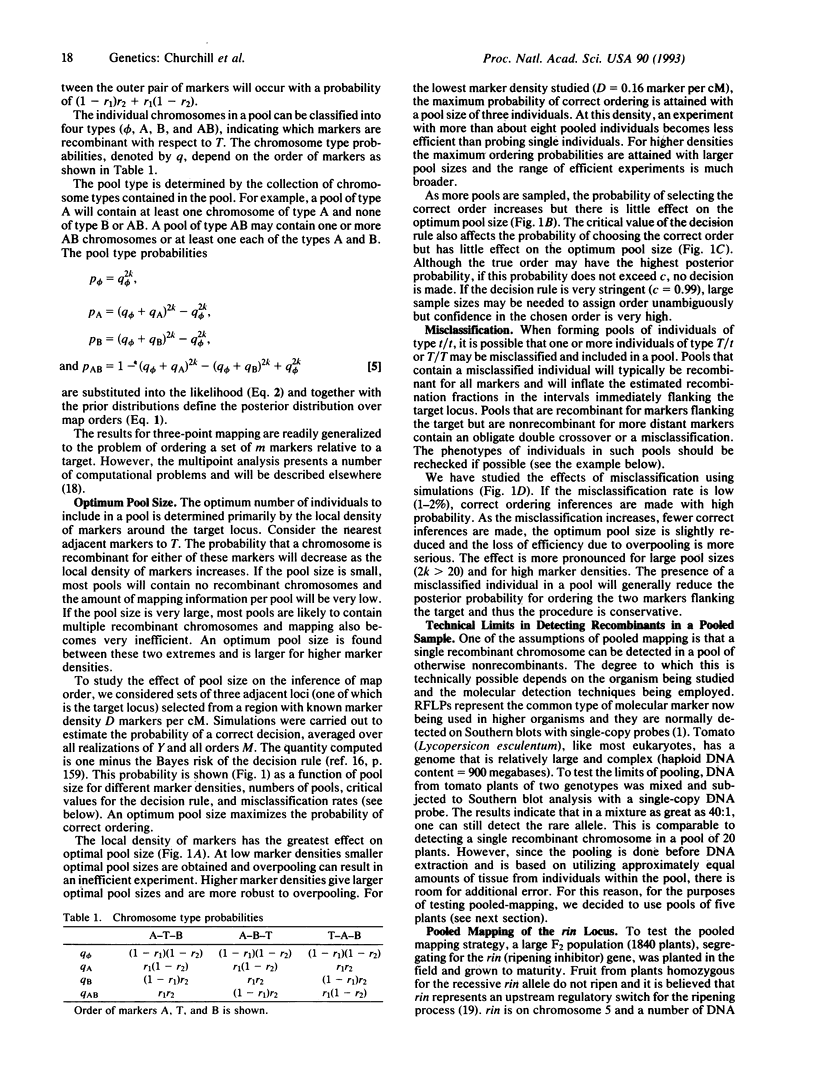
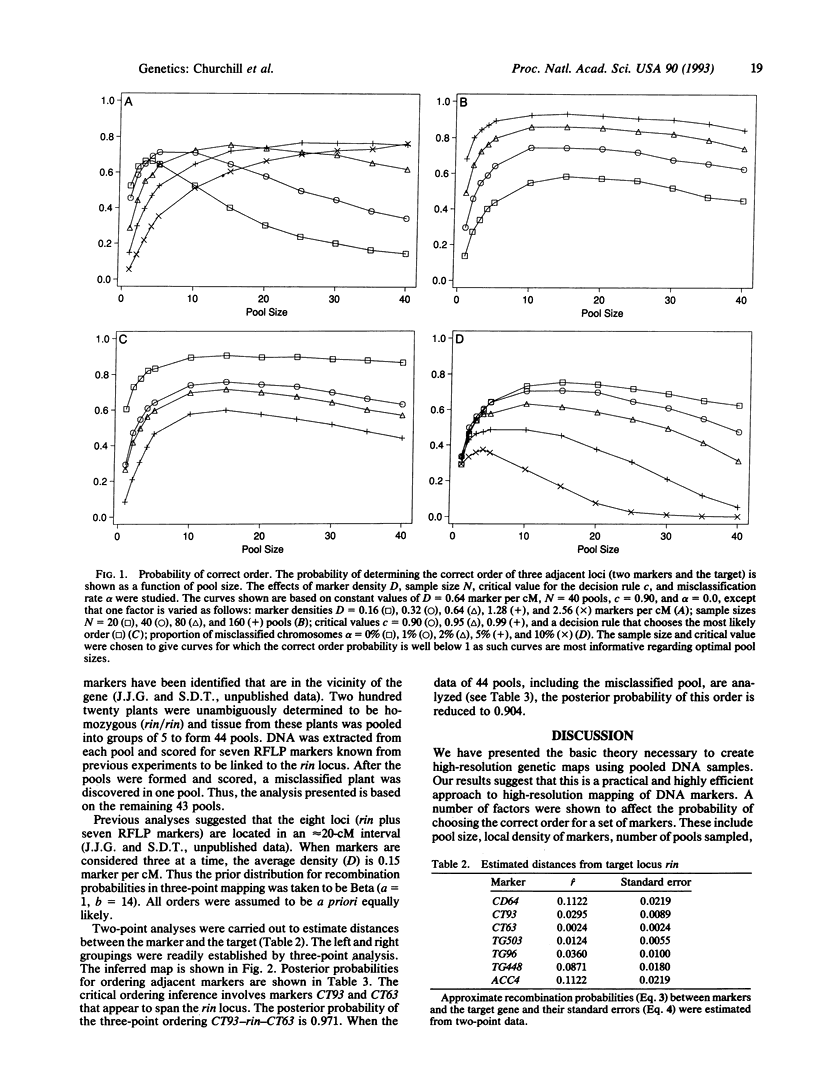
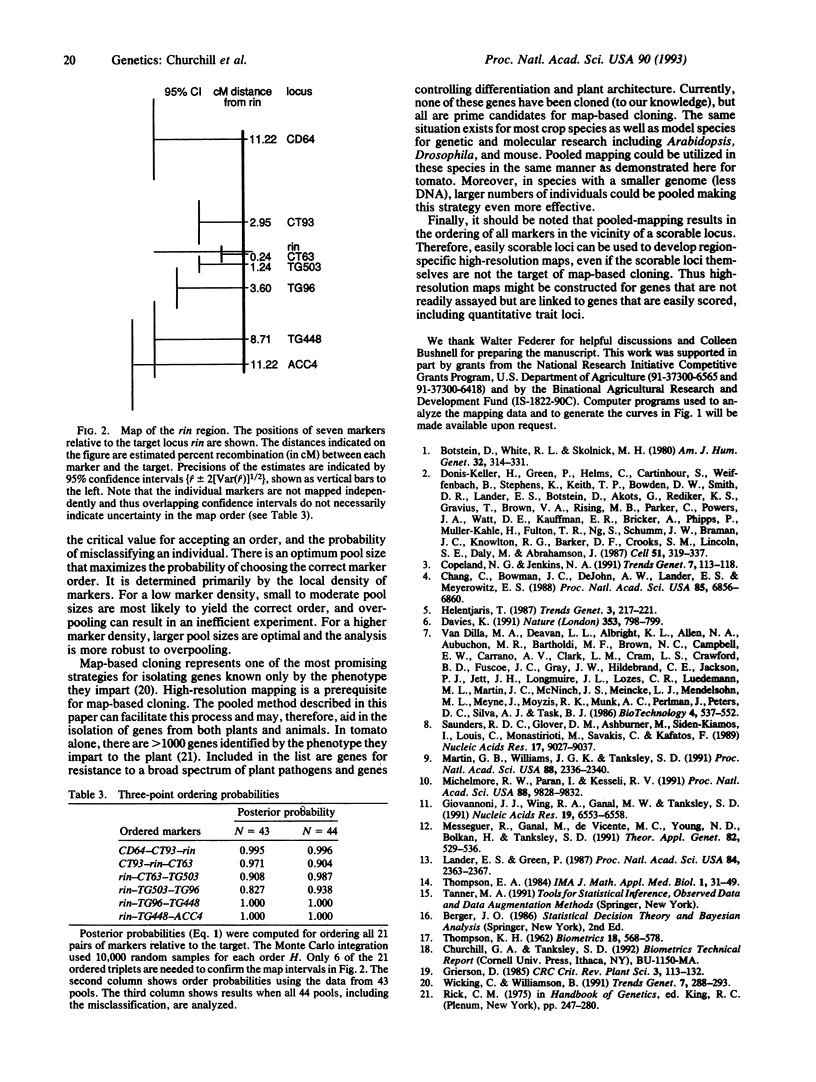
Selected References
These references are in PubMed. This may not be the complete list of references from this article.
- Botstein D., White R. L., Skolnick M., Davis R. W. Construction of a genetic linkage map in man using restriction fragment length polymorphisms. Am J Hum Genet. 1980 May;32(3):314–331. [PMC free article] [PubMed] [Google Scholar]
- Chang C., Bowman J. L., DeJohn A. W., Lander E. S., Meyerowitz E. M. Restriction fragment length polymorphism linkage map for Arabidopsis thaliana. Proc Natl Acad Sci U S A. 1988 Sep;85(18):6856–6860. doi: 10.1073/pnas.85.18.6856. [DOI] [PMC free article] [PubMed] [Google Scholar]
- Copeland N. G., Jenkins N. A. Development and applications of a molecular genetic linkage map of the mouse genome. Trends Genet. 1991 Apr;7(4):113–118. doi: 10.1016/0168-9525(91)90455-y. [DOI] [PubMed] [Google Scholar]
- Davies K. Human genetics. Mapping the way forward. Nature. 1991 Oct 31;353(6347):798–799. doi: 10.1038/353798a0. [DOI] [PubMed] [Google Scholar]
- Donis-Keller H., Green P., Helms C., Cartinhour S., Weiffenbach B., Stephens K., Keith T. P., Bowden D. W., Smith D. R., Lander E. S. A genetic linkage map of the human genome. Cell. 1987 Oct 23;51(2):319–337. doi: 10.1016/0092-8674(87)90158-9. [DOI] [PubMed] [Google Scholar]
- Giovannoni J. J., Wing R. A., Ganal M. W., Tanksley S. D. Isolation of molecular markers from specific chromosomal intervals using DNA pools from existing mapping populations. Nucleic Acids Res. 1991 Dec 11;19(23):6553–6558. doi: 10.1093/nar/19.23.6553. [DOI] [PMC free article] [PubMed] [Google Scholar]
- Lander E. S., Green P. Construction of multilocus genetic linkage maps in humans. Proc Natl Acad Sci U S A. 1987 Apr;84(8):2363–2367. doi: 10.1073/pnas.84.8.2363. [DOI] [PMC free article] [PubMed] [Google Scholar]
- Martin G. B., Williams J. G., Tanksley S. D. Rapid identification of markers linked to a Pseudomonas resistance gene in tomato by using random primers and near-isogenic lines. Proc Natl Acad Sci U S A. 1991 Mar 15;88(6):2336–2340. doi: 10.1073/pnas.88.6.2336. [DOI] [PMC free article] [PubMed] [Google Scholar]
- Michelmore R. W., Paran I., Kesseli R. V. Identification of markers linked to disease-resistance genes by bulked segregant analysis: a rapid method to detect markers in specific genomic regions by using segregating populations. Proc Natl Acad Sci U S A. 1991 Nov 1;88(21):9828–9832. doi: 10.1073/pnas.88.21.9828. [DOI] [PMC free article] [PubMed] [Google Scholar]
- Saunders R. D., Glover D. M., Ashburner M., Siden-Kiamos I., Louis C., Monastirioti M., Savakis C., Kafatos F. PCR amplification of DNA microdissected from a single polytene chromosome band: a comparison with conventional microcloning. Nucleic Acids Res. 1989 Nov 25;17(22):9027–9037. doi: 10.1093/nar/17.22.9027. [DOI] [PMC free article] [PubMed] [Google Scholar]
- Thompson E. A. Information gain in joint linkage analysis. IMA J Math Appl Med Biol. 1984;1(1):31–49. doi: 10.1093/imammb/1.1.31. [DOI] [PubMed] [Google Scholar]
- Wicking C., Williamson B. From linked marker to gene. Trends Genet. 1991 Sep;7(9):288–293. doi: 10.1016/0168-9525(91)90310-M. [DOI] [PubMed] [Google Scholar]


